| Listing 1 - 8 of 8 |
Sort by
|
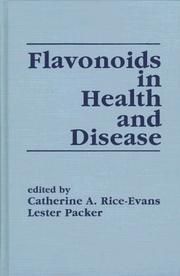
ISBN: 9780824700966 0824700961 Year: 1998 Publisher: New York (N.Y.): Dekker,
Abstract | Keywords | Export | Availability | Bookmark
 Loading...
Loading...Choose an application
- Reference Manager
- EndNote
- RefWorks (Direct export to RefWorks)
Bioflavonoids --- Flavonoids --- Antioxidants
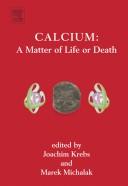
ISBN: 044489716X 0444803033 9786612167720 1282167723 0080860885 Year: 1994 Volume: 28 Publisher: Amsterdam : Elsevier,
Abstract | Keywords | Export | Availability | Bookmark
 Loading...
Loading...Choose an application
- Reference Manager
- EndNote
- RefWorks (Direct export to RefWorks)
Active oxygen --- Antioxidants --- Free radicals (Chemistry) --- Free Radicals --- Reactive Oxygen Species --- Chemical inhibitors --- Oxygen radicals --- Reactive oxygen --- Singlet oxygen --- Superperoxide anion --- Ionization of gases --- Oxygen --- Active Oxygen --- Oxygen Species, Reactive --- Pro-Oxidants --- Oxygen Radicals --- Oxygen, Active --- Pro Oxidants --- Oxygen Radical Absorbance Capacity --- Superoxides --- Radicals, Free --- Free Radical Scavengers --- Anti-Oxidant Effect --- Anti-Oxidant Effects --- Anti-Oxidants --- Antioxidant Effect --- Antioxidant Effects --- Anti Oxidant Effect --- Anti Oxidant Effects --- Anti Oxidants --- Food Preservatives --- Oxidation-Reduction --- Preservatives, Pharmaceutical --- Oxidants --- Pathophysiology --- Active oxygen. --- Antioxidants. --- Free Radicals. --- Reactive Oxygen Species. --- Pathophysiology. --- Antioxydants --- Radicaux libres (Chimie) --- Physiopathologie --- Pro-Oxidant --- Pro Oxidant --- Free Radical --- Radical, Free --- Anti-Oxidant --- Antioxidant --- Antioxidant Activity --- Activity, Antioxidant --- Anti Oxidant --- Active Oxygen Species --- Oxygen Radical --- Reactive Oxygen Intermediates --- Radical, Oxygen
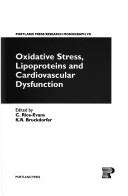
ISBN: 1855780453 9781855780453 Year: 1995 Publisher: London: Portland,
Abstract | Keywords | Export | Availability | Bookmark
 Loading...
Loading...Choose an application
- Reference Manager
- EndNote
- RefWorks (Direct export to RefWorks)
Book
ISBN: 0903840049 Year: 1988 Publisher: London Richelieu Press
Abstract | Keywords | Export | Availability | Bookmark
 Loading...
Loading...Choose an application
- Reference Manager
- EndNote
- RefWorks (Direct export to RefWorks)
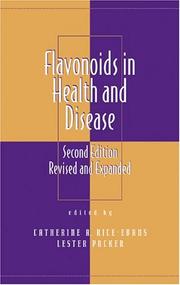
ISBN: 0824742346 Year: 2003 Publisher: New York, Basel : Marcel Dekker,
Abstract | Keywords | Export | Availability | Bookmark
 Loading...
Loading...Choose an application
- Reference Manager
- EndNote
- RefWorks (Direct export to RefWorks)
Flavonoids. --- Antioxidants --- Fruit --- Health food --- Vegetables
Book
ISBN: 1855780690 9781855780699 Year: 1995 Volume: 61 Publisher: London Portland Press
Abstract | Keywords | Export | Availability | Bookmark
 Loading...
Loading...Choose an application
- Reference Manager
- EndNote
- RefWorks (Direct export to RefWorks)
Biopharmaco-efficiency. Pharmacokinetics --- Free radicals (Chemistry) --- Oxidative stress --- Air --- Food additives --- Air Pollution --- Food Additives --- Free Radicals --- Pathophysiology --- Pollution --- Physiological effect --- congresses. --- General biochemistry --- Drugs --- Congresses. --- Free radicals (Chemistry) - Pathophysiology - Congresses. --- Oxidative stress - Pathophysiology - Congresses. --- Air - Pollution - Congresses. --- Drugs - Physiological effect - Congresses. --- Food additives - Congresses. --- Air Pollution - congresses --- Food Additives - congresses. --- Free Radicals - congresses --- RADICALS (CHEMISTRY) --- ENVIRONMENT --- OXIDATIVE STRESS, BIOLOGICAL --- PHARMACEUTICAL PREPARATIONS --- FOOD ADDITIVES --- ANTIOXIDANTS --- BIOLOGICAL STUDIES
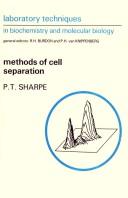
ISBN: 0444813047 9780080858913 0080858910 9780444813046 1281759740 9781281759740 0444813144 9780444813145 0720442001 0720442206 0444802231 9786611759742 Year: 1991 Publisher: Amsterdam: Elsevier,
Abstract | Keywords | Export | Availability | Bookmark
 Loading...
Loading...Choose an application
- Reference Manager
- EndNote
- RefWorks (Direct export to RefWorks)
Free radical species are generally short-lived due to their high reactivity and thus direct measurement and identification are often impossible. ESR is the only technique which has the potential for direct detection of radicals but in biological systems even these must be trapped by a spin-trapping agent. Thus most investigations involve recognition of indicators of the presence of radicals in vivo or ""FOOTPRINTS"" of radical-mediated damage. Techniques in Free Radical Research assembles and critically assesses the most relevant and reliable experimental approaches used towards t
Analytical biochemistry --- Free Radicals - chemistry --- Free Radicals - adverse effects --- Research - methods --- Chromatography, Gel --- 543.544 --- 661.18 --- Biochemistry --- -Gel permeation chromatography --- Molecular biology --- -Molecular biochemistry --- Molecular biophysics --- Biophysics --- Biomolecules --- Systems biology --- Chromatography, Gel permeation --- Chromatography, Size exclusion --- Gel filtration chromatography --- SEC (Chromatographic analysis) --- Size exclusion chromatography --- Steric exclusion liquid chromatography --- Chromatographic analysis --- Biological chemistry --- Chemical composition of organisms --- Organisms --- Physiological chemistry --- Biology --- Chemistry --- Medical sciences --- 661.18 Colloids. Surface-active agents. Washing, foaming, flotation agents etc. --- Colloids. Surface-active agents. Washing, foaming, flotation agents etc. --- 543.544 Chromatographic analysis. Chromatography --- Chromatographic analysis. Chromatography --- Chromatography, Size Exclusion --- Exclusion Chromatography --- Gel Chromatography --- Gel Permeation Chromatography --- Molecular Sieve Chromatography --- Chromatography, Exclusion --- Chromatography, Gel Permeation --- Chromatography, Molecular Sieve --- Gel Filtration --- Gel Filtration Chromatography --- Chromatography, Gel Filtration --- Exclusion Chromatography, Size --- Filtration Chromatography, Gel --- Filtration, Gel --- Sieve Chromatography, Molecular --- Size Exclusion Chromatography --- Technique --- Composition --- Free radicals (Chemistry) --- Radicals (Chemistry) --- Free radical reactions --- Research --- Methodology. --- Free Radicals --- Research Design --- 541.515 --- 541.515 Free radicals --- Free radicals --- Data Adjustment --- Data Reporting --- Design, Experimental --- Designs, Experimental --- Error Sources --- Experimental Designs --- Matched Groups --- Methodology, Research --- Problem Formulation --- Research Methodology --- Research Proposal --- Research Strategy --- Research Technics --- Research Techniques --- Scoring Methods --- Experimental Design --- Adjustment, Data --- Adjustments, Data --- Data Adjustments --- Design, Research --- Designs, Research --- Error Source --- Formulation, Problem --- Formulations, Problem --- Group, Matched --- Groups, Matched --- Matched Group --- Method, Scoring --- Methods, Scoring --- Problem Formulations --- Proposal, Research --- Proposals, Research --- Reporting, Data --- Research Designs --- Research Proposals --- Research Strategies --- Research Technic --- Research Technique --- Scoring Method --- Source, Error --- Sources, Error --- Strategies, Research --- Strategy, Research --- Technic, Research --- Technics, Research --- Technique, Research --- Techniques, Research --- Clinical Trials Data Monitoring Committees --- adverse effects --- chemistry --- methods --- Radioimmunoassay. --- Biological techniques --- Enzymology --- Immunology. Immunopathology --- Clinical chemistry --- Fysicochemical separation methods --- Histology. Cytology --- -Technique

ISBN: 0444813047 9780080858913 0080858910 9780444813046 1281759740 9781281759740 Year: 1991 Publisher: Amsterdam Elsevier
Abstract | Keywords | Export | Availability | Bookmark
 Loading...
Loading...Choose an application
- Reference Manager
- EndNote
- RefWorks (Direct export to RefWorks)
Free radical species are generally short-lived due to their high reactivity and thus direct measurement and identification are often impossible. ESR is the only technique which has the potential for direct detection of radicals but in biological systems even these must be trapped by a spin-trapping agent. Thus most investigations involve recognition of indicators of the presence of radicals in vivo or andquot;FOOTPRINTSandquot; of radical-mediated damage. Techniques in Free Radical Research assembles and critically assesses the most relevant and reliable experimental approaches used towards th.
| Listing 1 - 8 of 8 |
Sort by
|

 Search
Search Feedback
Feedback About UniCat
About UniCat  Help
Help News
News